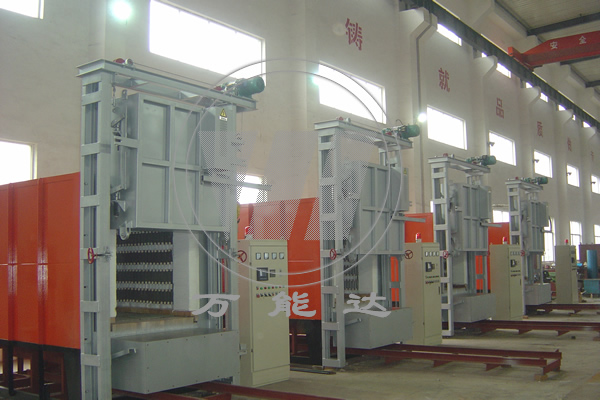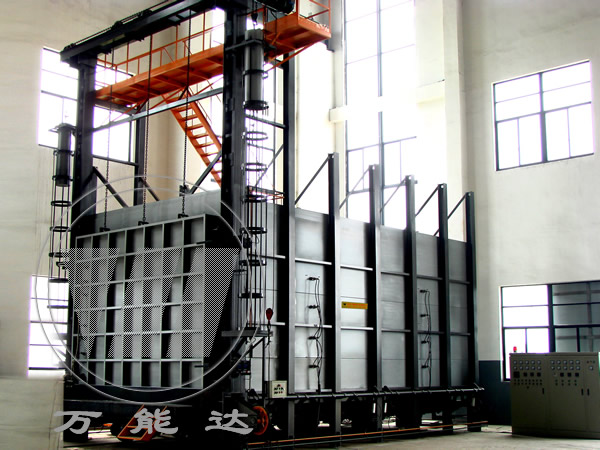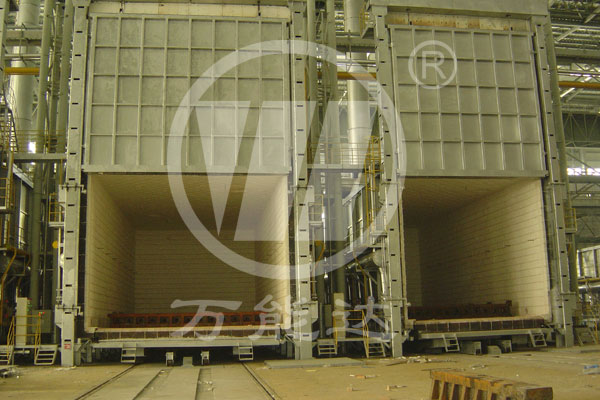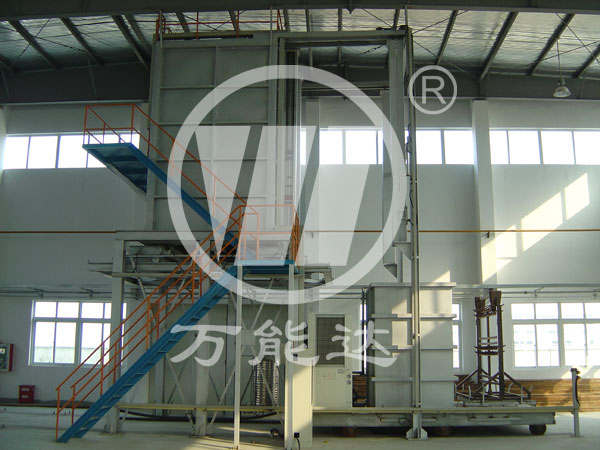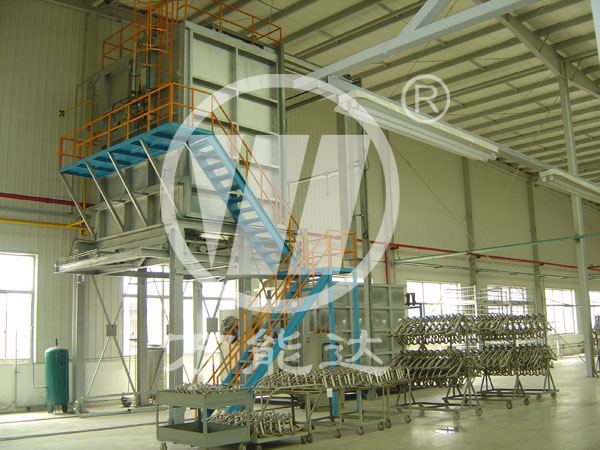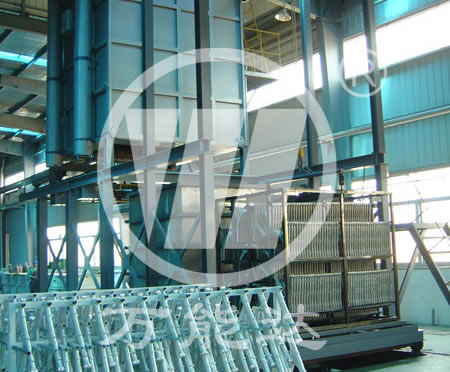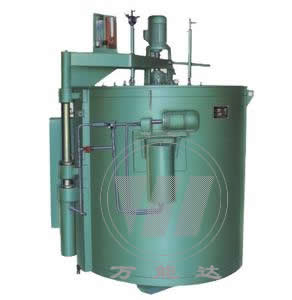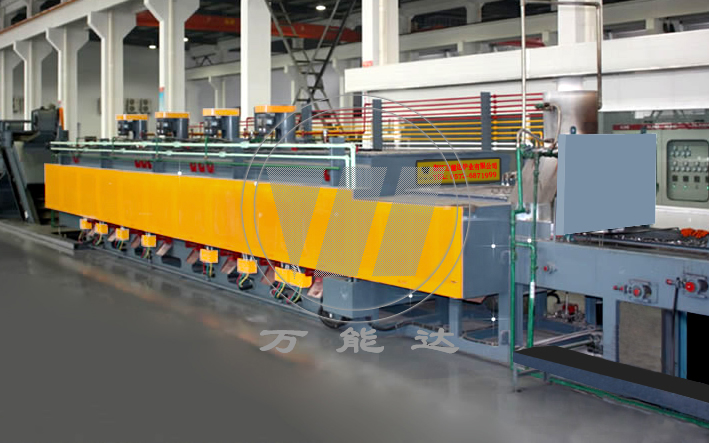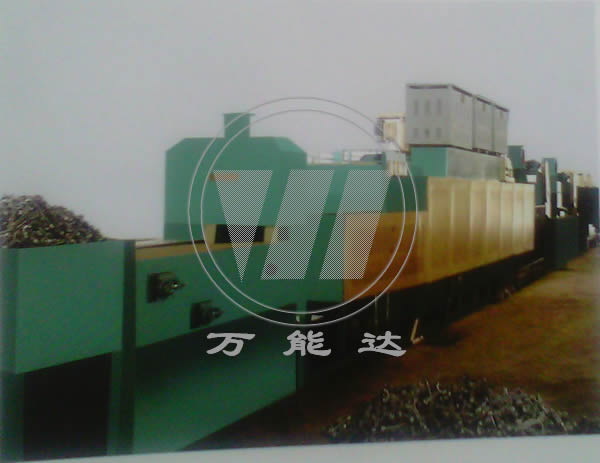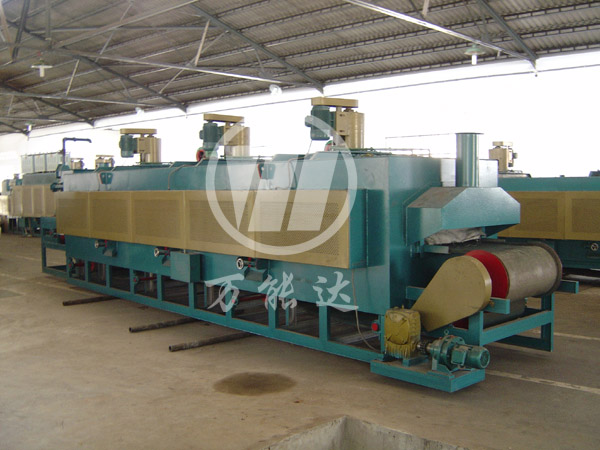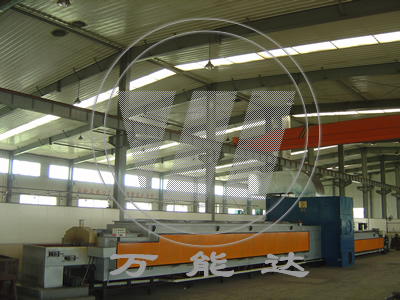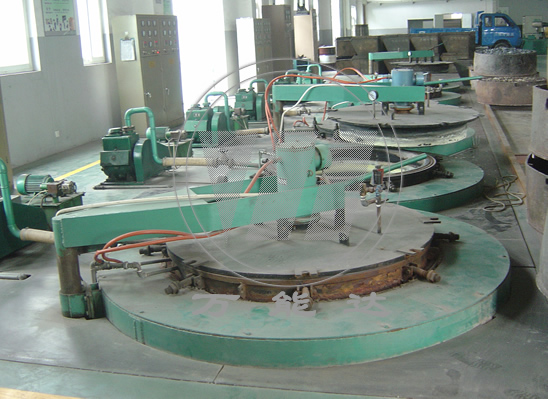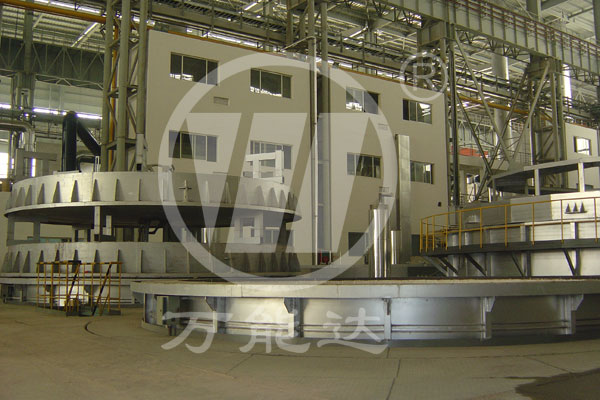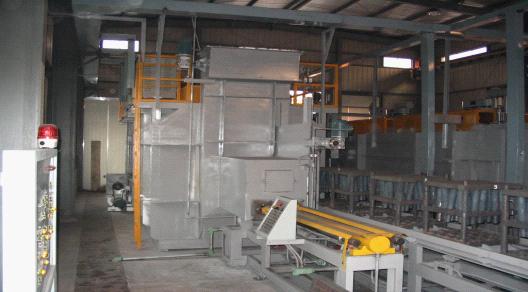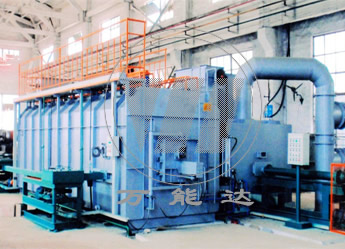浙江万能达炉业有限公司
手 机: 13705828806
电 话:0572-6871999 6087213 6870511
传 真:0572-6087105
E-mail:1390003299@qq.com
地 址:浙江省长兴县林城工业园区鼎兴北路6号(林城高速路口下20米左侧)
感应加热炉淬火冷却装置的设计要点
为了保证感应加热炉淬火冷却器的冷却能力和冷却效果,在设计淬火冷却 器时要注意下列几点。
1、准确计算冷却器的冷却能力冷却能力就是单位时间由冷 却介质吸收并排放的热能(MJ・h)。冷却能力要大于钢材淬火降 温所排出的热能。冷却介质带走的热能与钢材释放出的热能之比例 大小,表示淬火冷却器的冷却能力。
2、淬火冷却介质应具有足够的压强冷却介质的压强是提供 给介质喷射液柱流动能的基础。液柱流有足够的动能才能冲破气 膜,保持高的冷却速度。冷却介质的压强随淬火钢材尺寸的增大而 升高。直径在100mrn以下的管材和直径在60mm以下的棒材,淬火冷却时使用淬火介质的压强为0.2〜0. 5MPa;大于以上尺寸的 管材和棒材,淬火介质的压强可适当提高至0. 3〜0. 6MPa。釆用 多大的淬火介质压强要结合生产实际进行调整,以上数据仅供参考。
3、喷水孔板的尺寸喷水孔板的设计合理与否,直接关系到冷却器的冷却效果。孔板设计中要把握好以下两个要点。
3.1进水管的横断面积要大于喷水孔总面积这样才能保持喷水注有足够的压强。通常进水管的面积比出水孔总面积大10% 左右。
3.2喷水孔的直径和孔距要合适喷水孔直径过小容易产生堵塞或锈蚀,影响冷却的均匀性。孔径过大孔距必然增大少水 注的冲击点,也会降低冷却的均匀性。合适的孔径和孔淬火 钢材的尺寸加以选定。通常情况下孔径应控制在2〜3mm,8〜10mm,特殊情况可适当放大。
4、淬火水柱的喷着点要均匀喷着点是否均匀,一方面平均喷孔的分布,另一方面还取决于钻孔的质量,特别是孔的深度。当钢材旋转前进时,可以弥补喷着点不均匀造成的缺点。旋涡 式冷却器和切向水柱冷却法,其喷水口的角度应保持一致才能产生 强劲的旋转涡流,强化冷却效果。
5、防止淬火介质和水蒸气进入加热感应器一旦淬火介质进 入加热感应器内,轻者影响钢材温度,严重时会使感应器匝间短路 损伤感应线圈。因此,必须防止淬火介质和水蒸气进入加热感应器 内。具体措施如下。
6、在感应加热炉淬火冷却器与感应器之间设挡水帘。挡水帘采用耐火化纤布条制成,高温钢材从预留孔中通过进入淬火冷却器。
6.1扩大淬火冷却器的排水孔面积或设计无底冷却器.使冷却 水直泄入下部水箱,保持冷却器内不积水。
Key Points in Design of Quenching and Cooling Device of Induction Heating Furnace
In order to ensure the cooling capacity and cooling effect of the quenching cooler of the induction heating furnace, the following points should be paid attention to when designing the quenching cooler.
1. Accurately calculate the cooling capacity of the cooler. The cooling capacity is the heat energy absorbed and discharged by the cooling medium per unit time (MJ·h). The cooling capacity is greater than the heat energy discharged from the quenching and cooling of the steel. The ratio of the heat energy taken away by the cooling medium to the heat energy released by the steel indicates the cooling capacity of the quenching cooler.
2. The quenching and cooling medium should have sufficient pressure. The pressure of the cooling medium is the basis for the flow energy of the sprayed liquid column provided to the medium. The liquid column flow has enough kinetic energy to break through the gas film and maintain a high cooling rate. The pressure of the cooling medium increases as the size of the quenched steel increases. 3 For pipes with a diameter of less than 100mrn and bars with a diameter of 60mm or less, the pressure of the quenching medium used during quenching and cooling is 0.2~0. 5MPa; for pipes and bars larger than the above size, the pressure of the quenching medium can be appropriately increased to 0.3 ~0. 6MPa. The quenching medium pressure to be used should be adjusted according to the actual production. The above data is for reference only.
3. The size of the water spray orifice. Whether the design of the water spray orifice is reasonable or not is directly related to the cooling effect of the cooler. The following two points must be grasped in the design of the orifice plate.
3.1 The cross-sectional area of the water inlet pipe must be larger than the total area of the spray hole in order to maintain sufficient pressure for the spray jet. Usually the area of the inlet pipe is about 10% larger than the total area of the outlet hole.
3.2 The diameter and pitch of the spray holes should be appropriate. If the diameter of the spray holes is too small, it is easy to cause blockage or rust, which affects the uniformity of cooling. If the hole diameter is too large, the hole distance will inevitably increase the impact point of less water injection, and will also reduce the uniformity of cooling. The appropriate hole diameter and the size of the hole quenched steel are selected. Under normal circumstances, the aperture should be controlled at 2~3mm, 8~10mm, special circumstances can be appropriately enlarged.
4. The spray point of the quenching water column should be uniform. Whether the spray point is uniform, on the one hand, the average spray hole distribution, on the other hand, also depends on the quality of the drilled hole, especially the depth of the hole. When the steel rotates forward, it can make up for the shortcomings caused by uneven spraying points. In the vortex cooler and the tangential water column cooling method, the angle of the water nozzles should be the same to generate a strong swirling vortex and enhance the cooling effect.
5. Prevent the quenching medium and water vapor from entering the heating inductor. Once the quenching medium enters the heating inductor, the lighter will affect the temperature of the steel, and the severer will cause a short circuit between the inductors and damage the induction coil. Therefore, it is necessary to prevent the quenching medium and water vapor from entering the heating inductor. The specific measures are as follows.
6. A water-retaining curtain is set between the quenching cooler of the induction heating furnace and the inductor. The water-retaining curtain is made of fire-resistant chemical fiber cloth strips, and the high-temperature steel enters the quenching cooler through the reserved holes.
6.1 Expand the area of the drainage hole of the quenching cooler or design a bottomless cooler. Let the cooling water drain directly into the lower water tank to keep no water in the cooler.
6.2 A tapered orifice plate is used on the feed side of the quenching cooler to prevent the cooling medium from overflowing.
电 话:0572-6871999 手 机:13936361130 13705828806
